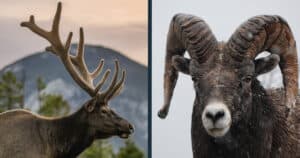
Antler vs Horn Comparison
If you’re like most, then you probably aren’t too focused on animal anatomy and its terminology. But just like in humans, titles are important … and it’s important to get them right. A common misuse
Perhaps nothing is quite as unique to the deer species as their antlers. Grown and shed annually, this miraculous and impressive feature – prized by hunters around the world – helps bucks and stags compete for mates during the yearly rut.
An extension of the deer’s skull, each deer antler is a single, miraculous structure made of bone, cartilage, skin, nerves, blood vessels and fibrous tissue.
Antlers are shed and regrown every year, and are used as weapons, symbols of sexual prowess, and as tools to dig in the snow for food.
Members of the Cervidae family (deer) are the only mammals that grow antlers, and the annual process of growing and shedding antlers is one of the most fascinating things about deer.
On this page we share some interesting articles that will help you learn more about deer antlers, the reasons why they are grown, how they harden during the gory velvet shedding process, and how antlers differ from horns.

If you’re like most, then you probably aren’t too focused on animal anatomy and its terminology. But just like in humans, titles are important … and it’s important to get them right. A common misuse
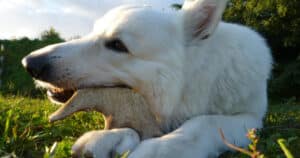
Dogs love to chew and, given the choice, they will clamp down on almost anything, whether it is good or bad for them. One of the challenges of owning a puppy and raising it to
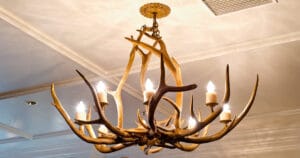
Deer antlers aren’t just for hanging on the wall. Maybe you already knew that animals like squirrels and mice find ways to use antlers, but did you know human beings can use them too? Let’s
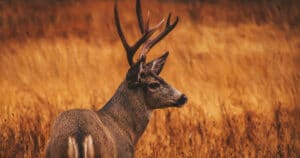
Deer are the only animals to possess antlers. All species of deer have antlers in one form or another. Unlike horns, which are permanent structures, antlers are lost each year and regrown afresh.
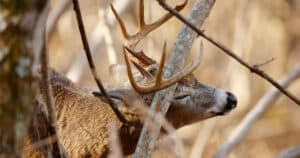
Identifying deer signs is essential for successful hunting. They’re also useful for photographers, deer enthusiasts, and nature lovers. Scrapes are one of the most useful deer signs, and you should know how to identify them.
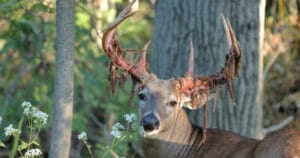
When it comes to deer antlers, the rut gets all the headlines. After all, this is the time when males literally bump heads to decide who gets the female. However, while males enter the rut
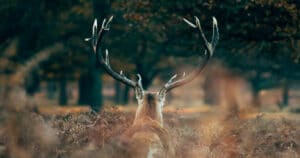
For many hunters and collectors, antlers are prized possessions. For the deer, it is a sign of virility and dominance, and a source of protection against other males and predators. Unlike horns that are found
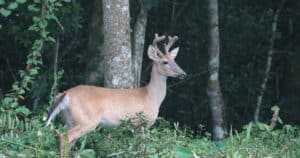
If you’ve ever seen a deer with enormous antlers, you may be shocked to learn that antlers are shed and grow back each and every year of the animal’s life. Once a male deer is
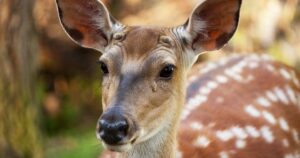
Have you ever wondered whether female deer have antlers? Maybe you’ve noticed that female deer don’t have antlers in the local species you’ve seen or learned about, but what about the many other deer species
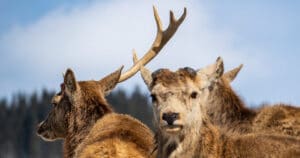
All deer shed their antlers as part of a natural process that corresponds to their reproductive cycle. Deer do not have to try to shed their antlers – the antlers shed themselves. But how do
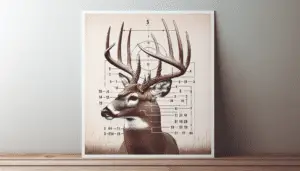
Understanding Antler Points and Their Significance Antler points play a pivotal role in the sport of deer hunting. Not only do they contribute to the trophy quality of a buck, but they also offer insights
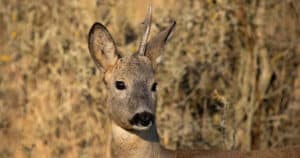
Most deer hunters know that looking at the antlers is one of the best ways to discern a deer’s age and other characteristics, such as species. But have you ever seen a buck with just
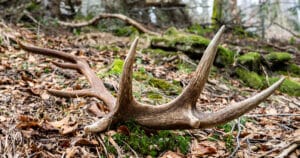
We’ve all heard of deer hunting, but what about shed antler hunting? It’s the process of searching for shed deer antlers in the wild. Deer shed their antlers every year, and many people enjoy searching
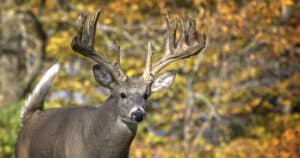
There are a number of different types of deer out there, and the terminology used to reference different deer, even among animals in the same species can get confusing. Deer terminology goes beyond just different
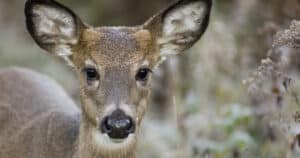
There are lots of terms to learn about when you start out as a deer hunter. One of these is “button buck.” So, what is a button buck, and what differentiates it from other male
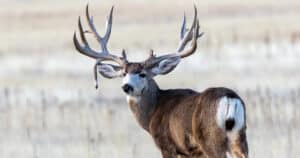
Deer hunters are always looking for prize animals that they can take down. And an exceptional or unusual antler rack is always a bonus. But you’ve got to learn about your prey first. Some of
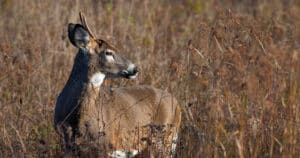
In the sport of hunting, one can often tell how old a male deer is based on the size and shape of his antlers. The older a deer is, the larger and more twisted his
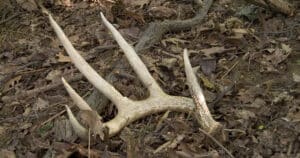
Unlike horns, antlers fall off and regrow every year. That’s why every buck (male deer) sheds its antlers once annually. Antler shedding and regrowth are impacted by several different factors, but they all relate back
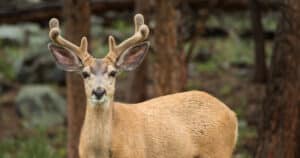
Antlers are a male deer’s most defining characteristic. Hunters are always on the lookout for a good set of antlers to hang on their walls or to use in interesting ways around the home. But
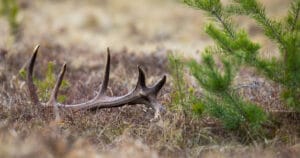
Deer antlers are an impressive hunting trophy that commemorates a successful trip. They can also be used in decorating your cabin or even transformed into tools. But did you know antlers can be found in
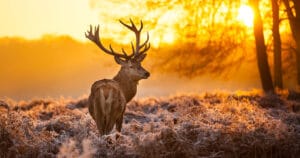
We tend to assume that the only purpose antlers serve is to help male deer fight during the mating season. The truth, however, is more complicated. Why do deer have antlers? Deer antlers serve a
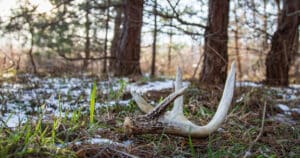
Have you ever asked yourself “Why do deer shed their antlers and regrow them?” In this article we’ll explore the evolutionary and physiological reasons why deer shed their antlers, and explain the process from beginning
Deer antlers are a unique and fascinating feature of the animal kingdom. Unlike horns, which are permanent bones covered with keratin, antlers are branched bones that are shed and regrown each year. They are primarily found in animals belonging to the deer family, such as white-tailed deer, elk, moose, and caribou. Antlers start as cartilage and gradually calcify into bone, making them the fastest-growing bone tissue in the world. This rapid growth is triggered by increasing daylight and testosterone production, and they are considered an extension of the skull.
Antler growth and regeneration is a remarkable process that showcases the incredible capabilities of deer. After shedding their antlers, which typically occurs in late winter or early spring, deer begin the process of growing a new set. This growth is fueled by good nutrition and a healthy diet, as antlers require a significant amount of resources to develop. Adult white-tailed deer can grow up to a quarter of an inch of antler per day, while moose can grow as much as a pound of antler per day.
The growth rate of antlers can vary depending on genetics and age, but it is primarily influenced by the availability of high-quality habitat and adequate nutrition. Antler growth begins as a soft tissue covered in velvet, which serves as a nutrient-rich covering. As the antlers near their final size, the velvet dries up and deer rub their antlers on trees and vegetation to remove it, revealing the hardened bone beneath.
Genetics play a significant role in determining the size and characteristics of deer antlers. While environmental factors such as nutrition and habitat quality are essential for optimal antler growth, the genetic makeup of an individual deer largely determines its antler size potential. Different deer species have varying genetic predispositions for antler development.
For example, moose are known for their impressive moose antlers, with males being capable of growing antlers that span up to six feet and weigh around 40 pounds each. On the other hand, white-tailed deer have smaller antlers, with the largest individuals typically reaching four to six points. These variations in antler size reflect the evolutionary adaptations of each species and their specific needs for survival, dominance, and reproduction.
Understanding the genetic factors influencing antler development can provide valuable insights into the overall health and fitness of deer populations and aid in the implementation of effective conservation and management strategies.
The velvet that covers growing antlers plays a crucial role in their development and protection. This thin, nutrient-rich covering provides a direct blood supply to the immature antlers, which start as cartilage and are calcified into bone. Velvet allows oxygen rich blood to reach growing antlers, which can be affected by injuries to the velvet or genetics. Velvet also serves as a protective sheath, shielding the antlers from damage and helping them maintain their integrity during the growth phase.
As the antlers near their final size, the velvet begins to dry up and itch, prompting deer to rub their antlers on trees and vegetation to remove it. This process, known as velvet shedding, typically occurs in early spring and marks the transition of the antlers from a growing state to a hardened, fully developed structure.
Velvet is a unique and essential component of antler development. It is a nutrient-rich covering that provides the necessary resources for rapid growth and mineralization. Velvet contains blood vessels that supply oxygen and vital nutrients to the growing antlers, ensuring their proper development.
The hair-like structure of velvet is composed of specialized cells called hair follicles, which are responsible for the production of hair-like fibers. These fibers not only protect the delicate antler tissue but also aid in the absorption of nutrients from the bloodstream. The presence of hair follicles also allows for the release of waste products and toxins from the antlers, maintaining their health and effectiveness.
Without the velvet covering, antler growth would be compromised, leading to weaker and smaller antlers. Therefore, the nutrient-rich velvet is crucial for the successful development and ultimate functionality of deer antlers.
Velvet shedding is an intriguing and dynamic process that marks the completion of antler growth. As the antlers reach their final size, the velvet begins to dry up and become itchy for the deer. This prompts them to rub their antlers on trees and other vegetation, facilitating the removal of the velvet. The rubbing action not only relieves the itching but also helps strengthen the antlers by removing any extra tissue and allowing them to harden.
The timing of velvet shedding is primarily influenced by biological factors such as increasing testosterone levels and changing daylight patterns. In most deer species, velvet shedding occurs in early spring, signaling the transition from the growth phase to the hardened state of the antlers. This shedding process is a crucial milestone in the life cycle of antlers, marking the completion of their development and preparing them for their various functions.
Deer with antlers exhibit fascinating behaviors and interactions, particularly during the mating season. Antlers play a significant role in dominance and mating rituals among deer species. Dominant males use their antlers to establish their status and assert dominance over rivals. They engage in sparring matches, locking antlers and pushing against each other to determine superiority.
During the rut, or mating season, antlers serve as visual cues to attract females and signal fitness and genetic quality. The size and quality of antlers can influence the breeding success of males, as females tend to choose mates with larger and more impressive antlers.
The presence of antlers also affects the social structure of deer populations, with larger antlered males often occupying higher positions in the hierarchy and enjoying greater access to resources and mating opportunities.
Antlers play a crucial role in dominance and mating rituals among male deer. Dominant males use their antlers to establish and assert their status over rivals during the rut, or mating season. This is often achieved through sparring matches, where males lock antlers and engage in physical contests to determine dominance. According to biologists, this behavior and use of antlers evolved as a way to compete for females.
Sparring serves multiple purposes, including the display of strength, the establishment of territory, and the attraction of potential mates. Dominant males may even offer their antlers to young males for sparring practice, further reinforcing their status.
The sound of antlers rattling during sparring serves as an important communication tool, attracting other males to the area and indicating the presence of potential competition. The intensity of sparring and the degree of aggression vary depending on the species and the specific social dynamics of the deer population.
Antlers have a profound impact on the social structure of deer populations. The size and quality of antlers often determine the hierarchy within a group, with larger antlered males occupying higher positions. Dominant males with impressive antlers have greater access to resources, such as food and mating opportunities, and are more likely to sire offspring.
The presence of antlers also influences the behavior and interactions among deer. Dominant males use their antlers to assert their dominance over rivals, often engaging in sparring matches to establish their status. Other males may exhibit submissive behaviors, such as avoiding confrontations with dominant individuals or engaging in non-aggressive posturing to avoid conflicts.
Understanding the role of antlers in deer social structure provides valuable insights into the dynamics of populations and the factors influencing reproductive success. It also highlights the significance of antlers as a visual signal of fitness and genetic quality in the mating process.
Deer antlers hold both historical significance and practical uses in human culture. Throughout history, antlers have been revered and utilized by various cultures for their symbolic value and practical applications. Today, deer antlers continue to hold a place in modern society, with their unique properties finding applications in medicine and decor.
The historical significance of antlers in human culture can be traced back to ancient times, where they were used as symbols of strength, fertility, and spiritual power. They were often incorporated into ceremonial objects, jewelry, and artwork.
In modern times, antlers are used in various industries, including medicine, where they are utilized for their regenerative properties and potential therapeutic applications. Additionally, antlers are sought after for their aesthetic appeal and are used in home decor, furniture, and crafts.
Antlers have played a significant role in human culture throughout history. In many ancient civilizations, they were regarded as symbols of strength, fertility, and spiritual power. Antlers were often incorporated into sacred objects, ceremonial attire, and religious rituals.
In Norse mythology, for example, the god Odin was associated with deer and their antlers. Antlered headdresses and artifacts have been found in ancient burial sites, suggesting their importance in rituals and beliefs surrounding the afterlife.
In addition to their symbolic value, antlers were also utilized for practical purposes. They were fashioned into tools, weapons, and utensils by indigenous cultures, who recognized their durability and versatility.
Even today, antlers continue to hold cultural significance in some communities, particularly in hunting traditions and as decorative elements in folk art and crafts. The historical and cultural significance of antlers exemplify their enduring appeal and connection to human heritage.
Deer antlers have found various modern uses, ranging from medicine to decor. In the field of medicine, antlers are valued for their regenerative properties and potential therapeutic applications. They contain a rich source of bioactive compounds, including growth factors, proteins, and minerals, which have been studied for their potential in tissue regeneration and wound healing.
Antler extracts and derivatives are used in traditional medicine practices in some cultures to treat ailments such as arthritis, osteoporosis, and inflammation. Research is ongoing to explore their potential in modern medicine, including the development of regenerative therapies and biomedical implants.
Antlers also hold aesthetic appeal and are sought after for their decorative qualities. They are used in the creation of unique and visually stunning pieces of furniture, lighting fixtures, and home decor. Their intricate shapes and natural textures make them a popular choice for adding a touch of rustic elegance to interior design.
Conservation efforts are crucial for preserving deer populations and ensuring the sustainable management of antlers. Hunting and other human activities can have a significant impact on deer populations, making conservation practices essential for their long-term survival.
Conservation measures aim to strike a balance between maintaining healthy deer populations and managing the impact of hunting. This involves implementing sustainable hunting practices, regulating hunting seasons and bag limits, and monitoring population dynamics.
Additionally, there is a growing focus on sustainable practices in shed antler collection, which involves gathering naturally shed antlers without causing harm to wildlife. Wildlife management agencies and organizations promote ethical collecting practices and educate the public about the importance of respecting wildlife habitats and adhering to regulations.
Hunting plays a significant role in the management of deer populations, but it must be carefully regulated to minimize its impact. Uncontrolled hunting can lead to overharvesting and negatively affect deer populations, disrupting ecological balance and genetic diversity.
Conservation efforts focus on implementing sustainable hunting practices, which involve establishing hunting seasons, setting bag limits, and enforcing regulations. These measures ensure that deer populations remain healthy and abundant while allowing for recreational hunting and population control.
Hunting also provides economic benefits, supporting local communities and conservation initiatives through license fees and taxes on hunting equipment. It promotes wildlife conservation by incentivizing habitat conservation and management.
By striking a balance between hunting and conservation, wildlife managers can effectively maintain healthy deer populations, preserve their genetic diversity, and ensure the long-term sustainability of antler resources.
Shed antler collection is a popular activity, but it must be carried out sustainably to minimize its impact on deer populations and their habitats. Sustainable practices focus on ethical collecting and responsible behavior to protect wildlife and preserve the integrity of ecosystems.
One of the key principles of sustainable shed antler collection is respecting wildlife habitats and sensitive areas. Collectors should stay on designated roads and paths to avoid disturbing wildlife and damaging vegetation. It is also important to give wildlife their space and avoid approaching or disturbing them during the collecting process.
Furthermore, shed antler collection should be conducted during the appropriate seasons and with the necessary permits, as regulations may vary between states and different designations of federal land.
By following these sustainable practices, collectors can enjoy the thrill of finding shed antlers while ensuring the long-term conservation of deer populations and their habitats.
Deer antlers, beyond their majestic appearance, hold a world of biological wonders. From genetic influences to velvet shedding and behavioral significance for deer, their role is multifaceted. Understanding the conservation efforts and human interactions sheds light on our historical and modern ties with these natural marvels. Exploring deer antlers not only unravels their captivating biology but also highlights the need for sustainable practices in their management. As we delve into their significance in human culture and ecological balance, a deeper appreciation for these marvels of nature emerges.
Yes, all species in the deer family, including white-tailed deer, elk, moose, and caribou, grow antlers. However, the presence of antlers in females varies across species. Caribou, also known as reindeer, are the only species where both males and females have antlers.
Antler size can provide some clues about a deer’s age, but it is not a reliable method for determining exact age. Antlers tend to reach their maximum size and complexity between 4 to 6 years of age for white-tailed deer, and between 9 to 12 years for elk.
If a deer’s antlers are damaged during growth, it can affect their development and appearance. Antlers are composed of growing bone, and any injuries to the velvet or the underlying structure can result in abnormalities or deformities in the antler’s shape and size.
The best time of year to find shed antlers is in early spring, after deer have shed their antlers. The exact timing may vary between regions, but generally, shed antlers can be found during late winter and early spring when deer are actively foraging and shedding their antlers.
Antler size can provide some insights into the health and nutrition of a deer. Larger and more robust antlers are typically indicative of good health and optimal nutrition. However, antler size alone should not be used as the sole determinant of a deer’s overall health.